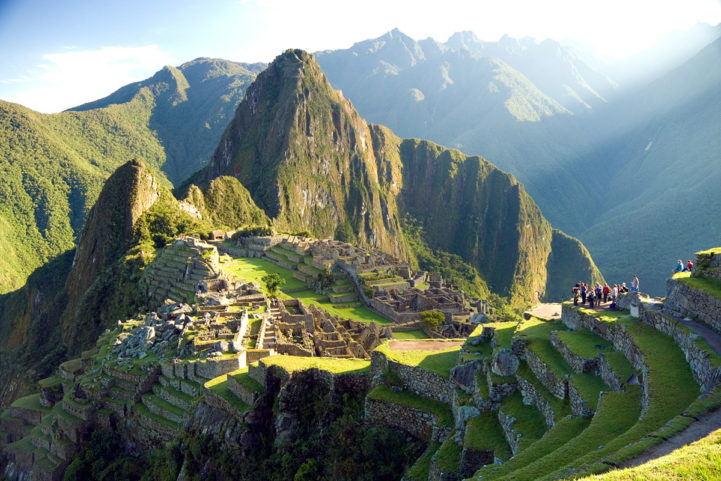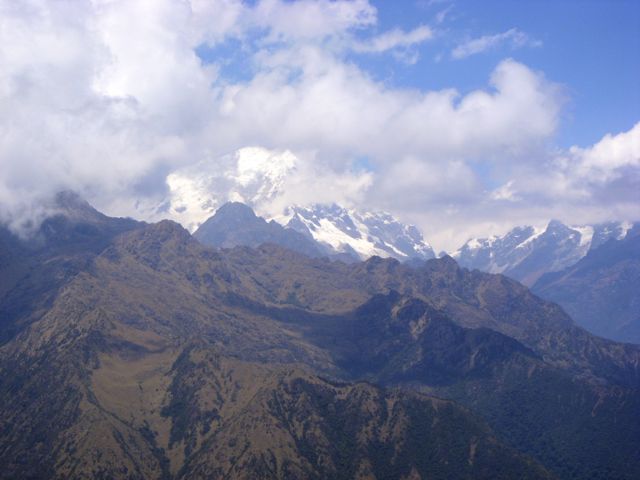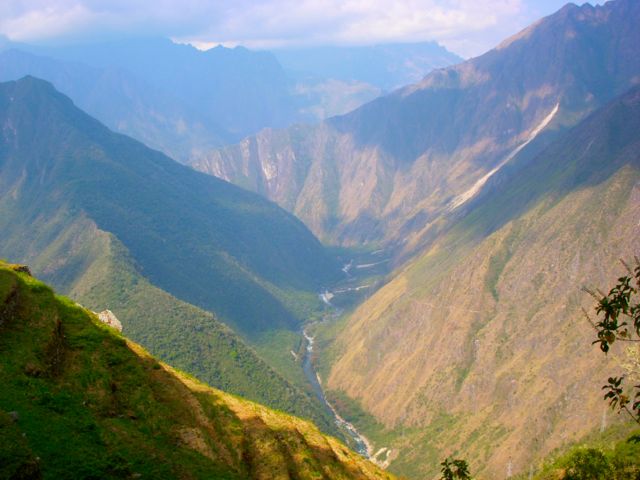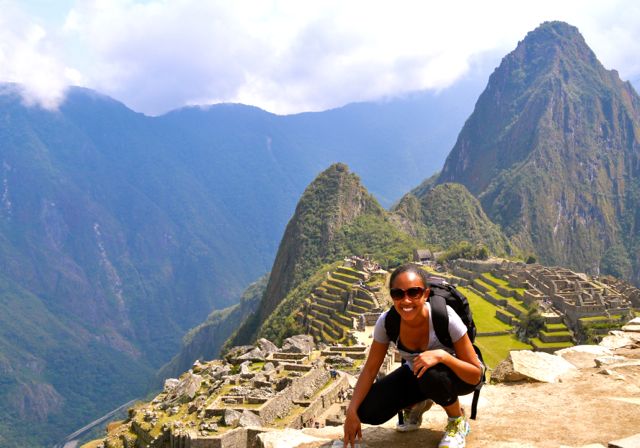There are countless reasons to visit Peru; the ceviche and Pisco sours, gorgeous valleys and beautiful brightly colored textiles, just to name a few. But for many, the chance to take the Inca Trail to Machu Picchu, the ancient city, is reason enough.
There are two ways to get to Machu Picchu: by bus or on foot. Around two thousand people board the bus from Aguas Calientes daily while only 500 people in total, including roughly 200 tourists and 300 porters, are allowed to begin the 4-day Inca Trail hike in Peru each morning. If hiking isn’t your idea of a good time, then the bus will definitely do the trick. But, if you are drawn toward adventure, like me, and want to follow in the footsteps of the Incas, here are a few facts that might convince you to start walking!
The Inca Trail to Machu Picchu
There are government control points along the Inca Trail and at each one you get a passport stamp. If you complete the entire 26-mile hike you can fill a whole page with records of the date and your location on that day. On day 4, when you finally reach the ancient city, you can get a Machu Picchu stamp. I had no idea that you could get stamps without crossing an international border and was so excited to have this log of my journey. Fellow travelers, I know you understand the allure of passport decoration.
Hiking the Inca Trail
The Inca Trail employs local men as porters ( aka supermen), a good job that allows many to support their families. Other locals are able to bring in a little income by selling water, Generade (Gatorade), toilet paper and other small items to hikers at the beginning of the trail. A few families even get subsidies from the government for allowing hikers to use part of their land as campsites. So, by hiking the Inca Trail you are able to directly and positively impact the lives of local people.
Taking in the Views on the Inca Trail
Day three of the trek is an unexpected wonder. You’re feeling good because you just defeated the infamous day two and are ready to fight your way to the top of another pass, but you don’t have to! Not only is the hiking much easier on day three, but you also get to see beautiful ruins, orchids, hummingbirds, and butterflies. If you listen closely you can hear the gentle trickle of small streams and waterfalls coming down the mountains. Plus, the panoramic views on day three are indescribable. I tried my best to capture the views in photos, but they do not come remotely close to the real experience.
Food on the Trail
The food on the Inca Trail is amazing! You must travel with a licensed tour company in order to be allowed on the trail. This means you move with a whole support team including at least one professional chef. Breakfast, lunch and dinner are catered, wherever you are, and the food is great. Meals ranged from local Andean dishes and other typical Peruvian foods that included rice, chicken, potatoes or eggs to giant pancakes with pictures of the sun drizzled on in caramel. At one point, the chefs even made a cake! While on top of a mountain! Whatever ends up on your plate, the food makes the journey that much more fun and keeps you well fueled during your trek.
Hiking the Inca Trail to Machu Picchu is Amazing
Machu Picchu is amazing no matter what, but hiking the Inca Trail makes your ultimate arrival so rewarding. The payoff is greater for having met the challenge of the 4-day hike and three nights of camping, for pushing yourself physically and mentally, and anticipating the prize. Plus, hikers arrive early in the morning, well before the day-trippers, giving them a few quiet moments to explore and take photos. In the end, making your way through the Sun Gate and then down to Machu Picchu on your own two feet makes the whole journey a memorable accomplishment that you get to own forever.
This story was curated by Shera Kenney



